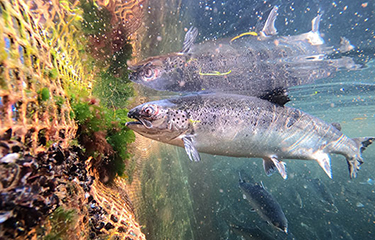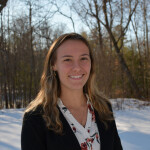ASC's updated salmon standard raises sea lice controversy

The Aquaculture Stewardship Council has released an updated version of its salmon standard with a new approach to sea lice monitoring that environmental groups have criticized.
ASC released version 1.4 of its salmon standard on 5 September, following a science-based review process. The new edition of the standard has a specific scope on sea lice management, with the aim of establishing more robustness in sea lice sampling and monitoring and the requirement that salmon farmers take immediate action to remediate sea lice problems if they pass certain thresholds, ASC said.
“The potential impact of sea lice on wild salmonid populations as well as farmed fish is an issue for the salmon industry. The revised requirements … address these concerns by establishing best practices in managing potential disease and parasite risks linked to sea lice,” ASC said in a press release.
ASC’s previous version of its standard set a global limit for maximum sea lice load on farms, but in crafting the new standard, ASC’s technical working group concluded sea lice threshold should be different depending on species, population, and geographic regions, requiring a regional approach. As a result, ASC’s new standard defers its limit-setting on sea lice controls to regional jurisdictions, and in areas where there are no regional rules for sea lice, salmon farmers are required to adhere to the strictest requirement found globally. The new standard also establishes “sensitive periods” that create times where sea lice controls are augmented to protect wild juvenile salmonids passing near farming sites, a time when they are susceptible to contracting sea lice and spreading it into wild populations.
The new standard establishes a sea lice sampling protocol requiring salmon aquaculture firms to improve the consistency of their data collection and analysis. Salmon farms are are now required to monitor sea lice species L. salmonis and Caligus to provide a better understanding of abundance of the species types.
In its release, ASC acknowledged that, in the past, ASC-certified salmon farmers have not always been punished for sea-lice limit exceedance, as a result of a dependency on audit timings. The new standard contains an update requiring farmers to inform their conformity assessment body (CAB) within one working day if any of their farms surpass their sea lice limits. A failure on their part to take corrective action to return sea lice levels to below the threshold within 21 days “will result in an ASC certification cancellation and therefore prohibit farms from selling fish as ASC-certified,” the organization said.
SeaChoice, a nonprofit collaborative made up of the David Suzuki Foundation, Ecology Action Centre, and Living Ocean, said it was concerned about the new rules.
“Over the past decade, sea lice outbreaks on farms have worsened and drug resistance has accelerated, while regulations and enforcement are either insufficient or non-existent,” David Suzuki Foundation Marine Conservation Specialist Kilian Stehfest said. “This should be reason enough to tighten sea lice requirements. Instead, the certification scheme’s decision to default to local laws means it no longer pushes industry to do better. It supports the status quo and the serious risk to wild fish populations that represents.”
SeaChoice said in areas where regional rules for sea lice are lax, the new standard might actually increase the number of sea lice allowed on certified farms by up to 1,550 percent. It also expressed concern regarding ASC's removal of a precautionary maximum sea lice limit that it said held farms to a higher standard than what is legally required of them.
“While we hope this means we will no longer see ASC-certified farms with sea lice levels as high as 31 lice per fish sold into the marketplace, nothing prevents a farm during that three-week period from harvesting and selling their fish with the ‘farmed responsibly’ label,” Living Oceans Society Sustainable Seafood Campaigner Kelly Roebuck said.
U.K.-based environmental conservation group WildFish also issued a statement criticizing ASC’s new standard.
“ASC asserts that it is the gold standard of salmon certification. Yet, throughout the 2021 juvenile wild salmon out-migration period, five of one company’s six Scottish operational ASC-certified farms consistently breached ASC’s sea lice limit,” Wildfish Scotland Director Andrew Graham-Stewart said. “However, these farms remain certified by ASC. Now, by substantially lowering the bar on its sea lice standard, ASC has at a stroke further devalued the dubious credibility of its certification.”
The last revision of the ASC salmon standard took place in July 2019. As a member of the International Social and Environmental Accreditation and Labelling Alliance (ISEAL), ASC is required to review its standards every three to five years, precipitating the latest review and update of its salmon standard.
“ASC recognizes the need to continuously improve our standards and finetune the requirements to make sure they deliver the intended positive impact. This new version is not the endpoint either. In fact, going forward, ASC will regularly review established sea lice limits across different regions and update its thresholds where necessary,” said ASC CEO Chris Ninnes.
There is a transition period of five months before the revised salmon standard becomes effective on 1 February, 2023.
Photo courtesy of Wildfish






Share